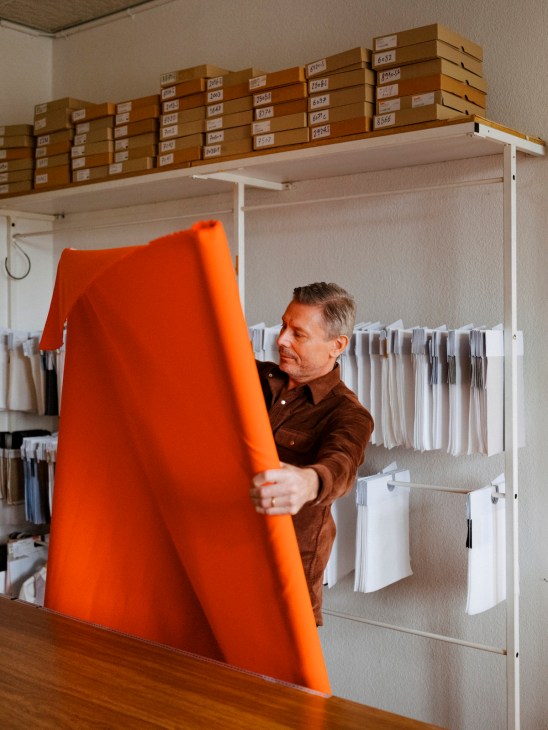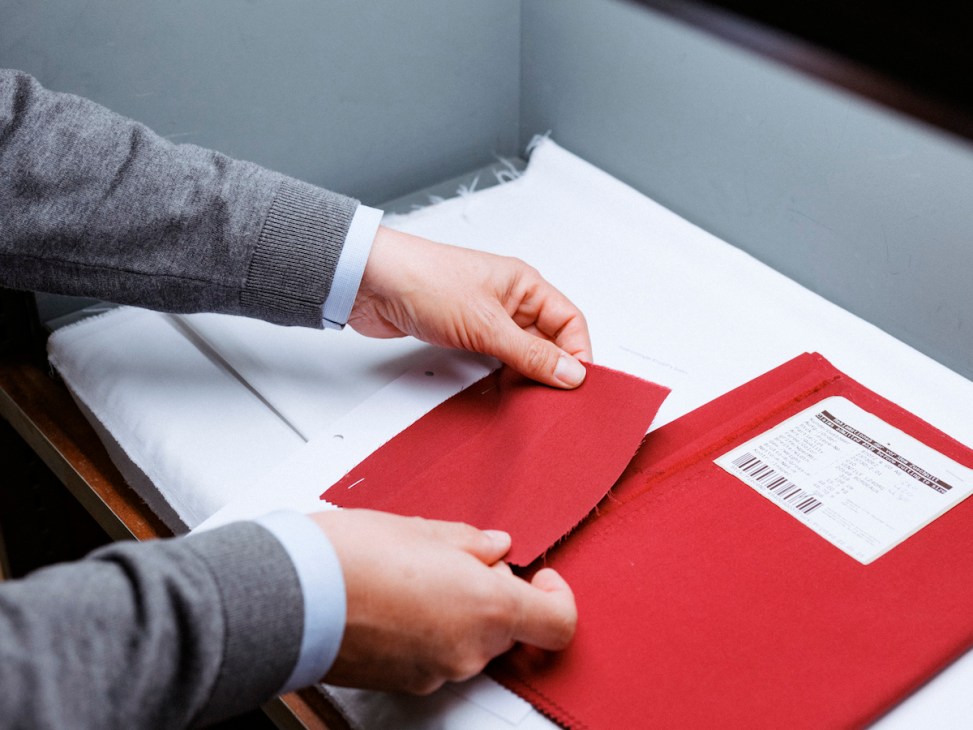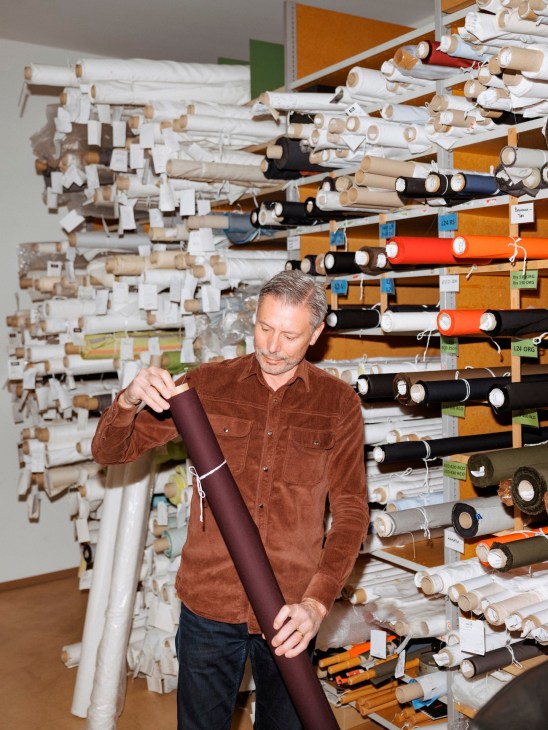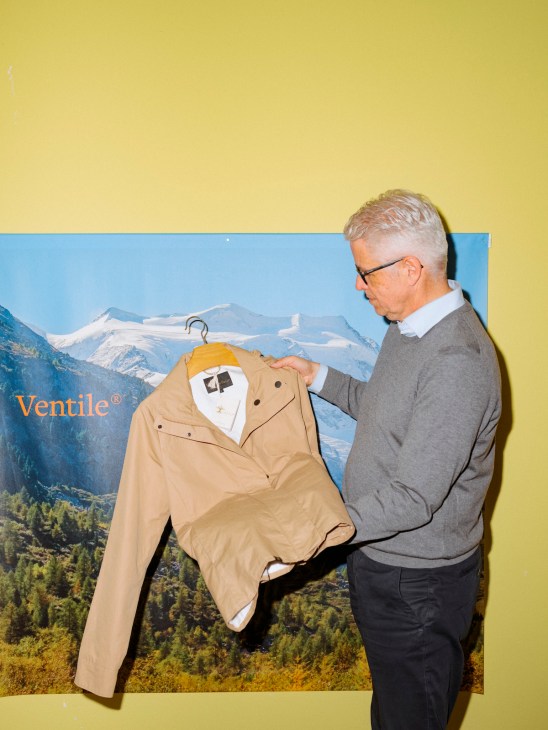Does the future of fashion start with these six new materials?
From non-toxic, water-resistant fabrics to alternative leather made from cacti, here are revolutionary textiles paving the way for sustainable style.
Many in the fashion sector are determined to do better for the environment. The future of materials presents a major opportunity on this frontier – creating fabrics that can be produced without using the dyes or chemicals that pollute waterways. It’s also about crafting clothes that are hardy enough to go the distance and remain objects of value season after season – instead of contributing to the tonnes of textile waste that end up in landfills every year.
1.
Ventile
Developed in Manchester during the Second World War to keep pilots warm and dry if they ended up in the sea, Ventile is an admittedly vintage innovation – indeed, it was used in outerwear worn by the first climbers to scale Everest. Yet the hardy waterproof material is now remaking the world of wet-weather gear. In 2017, Swiss textile firm Stotz & Co acquired the Ventile brand, giving it a new lease of life. The material is enjoying a stylish renaissance: it’s now more commonly found on the catwalk than in combat situations.


According to Daniel Odermatt, Stotz & Co’s brand director, Ventile’s big sell is that it is waterproof without relying on harmful “forever chemicals”, or PFAs. Woven from long-staple organic cotton, its fibres pull tightly together when it comes into contact with water, keeping moisture out. Though polluting, PFAs were historically the industry standard and were used in a wide range of waterproof outdoor clothing, including in popular materials such as Gore-tex. Now, though, the tide is turning: in the past year, several US states have banned their use in consumer goods and the EU has signalled plans to roll out similar measures. Brands are looking for alternatives.
As a result, demand for Ventile has soared in recent years, says Odermatt from his office overlooking the Limmat river in Zürich. “In 2023, Stone Island wanted a technical fabric in all-natural fibres. So it came to us.”
While Ventile is still used for limited runs of British and Swedish military immersion suits, the order book is now dominated by fashion brands. Lemaire, CP Company, A Kind of Guise and Loewe have all featured the material in their recent outerwear collections.


Though a mid-20th-century invention, Ventile still seems surprisingly ahead of the curve. To demonstrate its waterproofing credentials, Odermatt shows monocle two large containers stacked on top of each other; the one above is full of water, while the one below is empty. A sliver of Ventile fabric separates the two. “The fibre swells roughly 10 per cent so it gets waterproof,” he says. Though the material creates an effective barrier for water droplets, it also offers an impressive degree of breathability. Odermatt pumps air into the bottom container and Monocle watches as bubbles pass up through the Ventile and into the water above.
There’s still a big hurdle for many brands, says Odermatt: the cost. The process of making Ventile involves the use of expensive cotton and a laborious manufacturing timeline that includes weaving in northern Italy and dyeing in northern Bavaria. Odermatt says that he would consider some Asian manufacturing further down the line.
For now, however, Ventile is a proudly European product. “We are the benchmark,” says Odermatt. The transformation of its fortunes is indicative of European fashion brands’ restless search for materials that can give them an edge over the competition.
2.
Cozterra
Developed by Singaporean materials company Xinterra, Cozterra is a fabric treatment that sequesters carbon dioxide from the air. Twenty T-shirts embedded with Cozterra can capture the same amount of carbon dioxide as a mature tree in a single day; the carbon is then converted into a harmless substance when the tops are washed. Clients include Singaporean activewear label Zoda and Brazilian clothing brand Malwee.
cozterra.com
3.
Eco Nasi
Made in Kenya from pineapple waste, Eco Nasi is a sustainable alternative to leather that has the look and feel of the real thing without the need for water-intensive, carbon-emitting treatments. Founded by Kenyan entrepreneur Olivia Okinyi, the Nairobi-based company makes good use of the natural abundance of hard-wearing cellulose in pineapples.
econasi.com
4.
Solea
From Madrid-based textile innovator Pyratex, Solea is a series of cotton fabrics that offers an important upside for European buyers: every strand is traceable to its point of origin on the continent. With strict EU regulations on tracking water use and labour conditions, clients are assured that the Spanish fabrics are made from cotton grown near Seville and comply with Europe’s high standards.
pyratex.com
5.
RCO100
Catering to fashion brands including Alexander McQueen and Vivienne Westwood, Swiss company Säntis Textiles has developed a machine named RCO100 to recycle cotton waste into yarns with the durability and feel of premium virgin cotton. Cutting out the use of chemicals, fresh cotton production and the need for water, the yarn can be used for canvas, denim, twills and more.
saentis-textiles.com
6.
Desserto cactus leather
Retaining leather’s patina and strength, the humble cactus is the base for Mexican entrepreneurs Adrián López Velarde and Marte Cázarez’s vegan leather, Desserto. Thanks to the dry conditions in which cacti grow, the textile is sustainable, humidity resistant and has few inconsistencies in the grain, earning it attention from the likes of Adidas, BMW and LVMH.
desserto.com.mx


